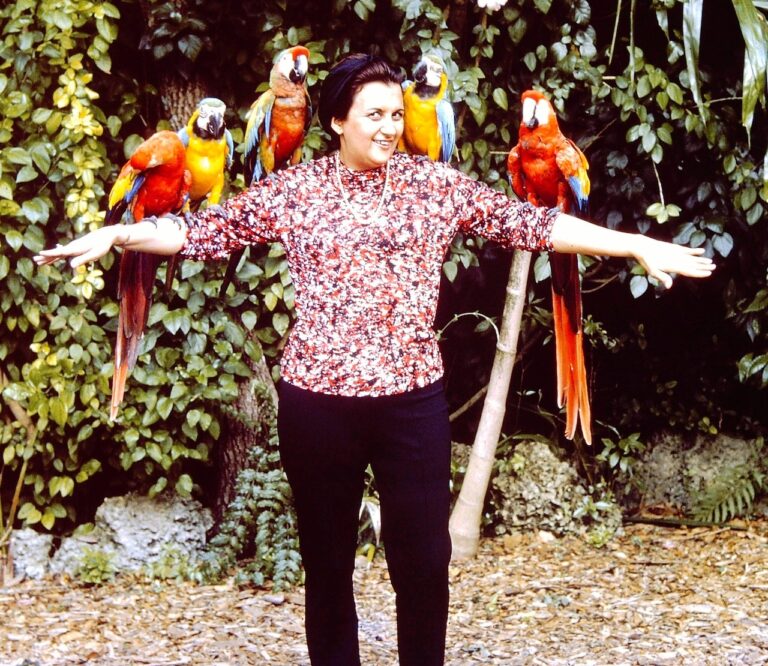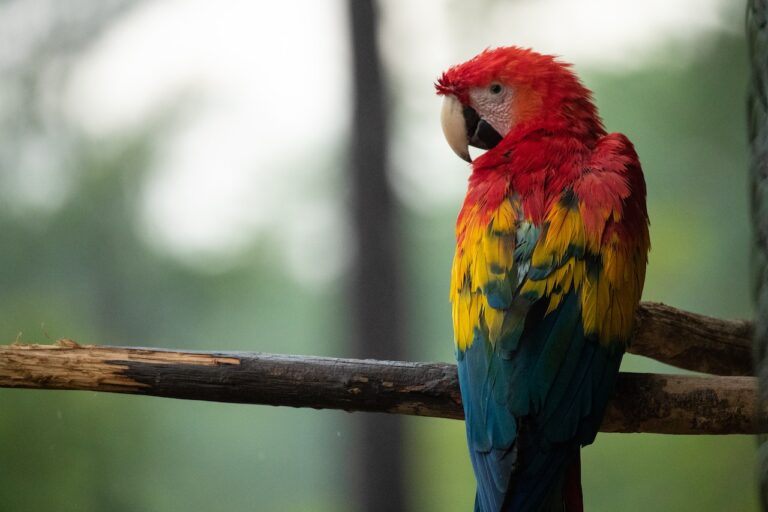Aquatic Exotic Pets Health – Proactive Steps to Keep Them Healthy
Welcome to the ultimate guide on proactive steps to keep your aquatic exotic pets healthy!
If you’re an enthusiast of fascinating underwater creatures and have decided to bring them into your home, providing them with the care they deserve is essential.
This comprehensive guide will equip you with the knowledge and practical tips to create a thriving environment for your aquatic exotic pets, ensuring their well-being and longevity.
Key Takeaways:
- Research the specific needs of your aquatic exotic pet to create an ideal environment.
- Maintain proper water quality, temperature, and filtration to ensure the well-being of your pets.
- Provide a balanced and nutritious diet tailored to your pet’s species.
- Regular veterinary care and check-ups are essential for early detection of health issues.
- Provide mental and physical stimulation through a stimulating environment, toys, and interaction.
- Handle your pets with care, respecting their boundaries and individual temperament.
- Identify and address potential hazards to keep your pets safe.
- Regular maintenance and cleanliness of the tank are crucial for optimal health.
- Adapt these steps to the specific needs of your pets and seek professional advice when needed.
Understanding Aquatic Exotic Pets
Aquatic exotic pets encompass a wide range of captivating creatures that dwell in water.
From vibrant tropical fish and majestic turtles to mesmerizing marine invertebrates and alluring amphibians, these unique animals add a touch of enchantment to any aquatic setup.
Their beauty, diverse behaviors, and intricate adaptations make them highly sought after by pet enthusiasts around the world.
Creating the Ideal Environment
To ensure the health and happiness of your aquatic exotic pets, it’s crucial to create an ideal environment that mimics their natural habitat.
Here are some proactive steps to achieve just that:
1. Researching the Specific Needs of Your Aquatic Exotic Pet
- Identify the specific species of aquatic exotic pet you have and gather information about their natural habitat, behavior, diet, and specific requirements.
- Learn about the ideal temperature range, pH level, water hardness, and other environmental factors necessary to create a suitable habitat.
2. Setting up the Right Tank or Enclosure
- Choose an appropriately sized tank or enclosure based on the adult size and activity level of your pet.
- Ensure the tank has secure lids or covers to prevent escapes and protect the pet from external disturbances.
- Provide adequate space for swimming, resting, and, if applicable, land areas for basking or nesting.
- Consider the compatibility of species if keeping multiple aquatic exotic pets in the same tank.
3. Maintaining Water Quality and Temperature
- Regularly test the water parameters using reliable test kits to monitor pH, ammonia, nitrite, nitrate, and temperature levels.
- Perform regular partial water changes (10-15% of the tank volume) to remove accumulated toxins and maintain water quality.
- Invest in a high-quality filtration system suitable for the size of your tank to keep the water clean and free from impurities.
- Use a heater and thermometer to maintain a consistent and appropriate temperature range for your aquatic exotic pets.
4. Choosing Appropriate Decorations and Hiding Spots
- Incorporate a variety of decorations, such as live or artificial plants, rocks, caves, and driftwood, to provide hiding spots and create a natural-looking environment.
- Ensure the decorations are safe and do not have sharp edges or small parts that could harm your pets.
- Consider the specific needs of your aquatic exotic pet. For example, turtles may require basking areas or platforms, while certain fish species may need specific types of hiding spots.
Feeding and Nutrition
A balanced and nutritious diet is vital for the overall health and vitality of your aquatic exotic pets.
Take the following steps to ensure they receive optimal nutrition:
1. Understanding the Dietary Requirements of Different Aquatic Exotic Pets
- Research the specific dietary needs of your aquatic exotic pet, including the types of food they require and the appropriate feeding frequency.
- Some pets may require a primarily herbivorous diet, while others may need a mix of plant matter and protein-based foods. Determine the ideal balance for your pet’s species.
2. Selecting High-Quality Commercial Food and Supplements
- Choose high-quality commercial food formulated specifically for your aquatic exotic pet’s species.
- Look for brands that use high-quality ingredients and have a good reputation for providing balanced nutrition.
- Consider adding appropriate supplements such as calcium or vitamins, but consult with a veterinarian to determine if they are necessary for your pet’s specific needs.
3. Incorporating Live and Frozen Foods for Variety and Enrichment
- Provide variety in your pet’s diet by incorporating live or frozen foods, such as brine shrimp, bloodworms, daphnia, or other suitable options.
- These foods can mimic their natural prey items, provide essential nutrients, and promote natural feeding behaviors.
- Ensure that any live foods are from a trusted source and free from parasites or contaminants.
Regular Veterinary Care
Regular veterinary care is crucial to detect and prevent potential health issues in your aquatic exotic pets.
Take these proactive steps to ensure their well-being:
1. Finding a Qualified Veterinarian with Experience in Exotic Aquatic Animals
- Seek a veterinarian who specializes in exotic aquatic pets or has experience in treating the specific species you have.
- Ask for recommendations from fellow pet owners, local aquarium stores, or exotic pet communities.
- Schedule an initial consultation to discuss your pet’s health and establish a relationship with the veterinarian.
2. Scheduling Regular Check-ups and Preventive Care
- Follow your veterinarian’s recommendations for regular check-ups, vaccinations, and preventive care measures such as deworming.
- Regular examinations can help identify any underlying health issues or concerns before they become serious problems.
- Be proactive in discussing any changes or abnormalities you observe in your pet’s behavior, appetite, or appearance.
3. Addressing Common Health Issues and Diseases
- Educate yourself about common health issues that affect aquatic exotic pets of your pet’s species.
- Be aware of the signs and symptoms of common diseases, infections, or parasites that may affect your pet.
- If you notice any unusual behaviors, changes in appetite, or physical abnormalities, consult your veterinarian promptly for diagnosis and treatment.
Maintaining Water Quality
Maintaining clean and balanced water is vital for the well-being of your aquatic exotic pets.
Follow these steps to ensure optimal water quality:
1. Monitoring and Testing Water Parameters
- Regularly test the water parameters using appropriate test kits for pH, ammonia, nitrite, nitrate, and other relevant factors.
- Maintain a log or record of the test results to track any changes or trends.
- Take corrective measures if any parameter falls outside the recommended range, such as adjusting pH or addressing ammonia or nitrite spikes.
2. Performing Regular Water Changes and Filtration Maintenance
- Perform routine partial water changes (10-15% of the tank volume) every one to two weeks to remove accumulated toxins and maintain water quality.
- During water changes, siphon out debris and uneaten food from the substrate to prevent the buildup of organic matter.
- Clean and maintain your filtration system regularly according to the manufacturer’s guidelines to ensure its effectiveness in removing impurities.
3. Controlling Algae Growth and Maintaining a Balanced Ecosystem
- Algae can quickly become a nuisance in aquatic environments, affecting water quality and the overall aesthetics of the tank.
- Manage light exposure by using appropriate lighting fixtures and maintaining a suitable photoperiod for your pet’s species.
- Avoid overfeeding, as excess nutrients can contribute to algae growth. Remove any excess food promptly.
- Introduce algae-eating organisms such as snails, shrimp, or certain fish species to help control algae growth naturally.
Providing Mental and Physical Stimulation
To promote the well-being of your aquatic exotic pets, it’s important to provide mental and physical stimulation.
Consider the following steps:
1. Creating a Diverse and Stimulating Environment
- Add a variety of decorations, plants, and structures to the tank to create a visually interesting and stimulating environment.
- Incorporate different textures, colors, and shapes to engage your pet’s senses and encourage exploration.
- Ensure that any decorations or structures are safe and do not pose a risk of injury or entrapment.
2. Incorporating Toys, Puzzles, and Interactive Feeding Methods
- Introduce interactive toys, puzzles, or feeding methods that encourage mental stimulation and natural foraging behaviors.
- Use floating toys, food-dispensing puzzles, or objects that allow your pet to interact and engage with their environment.
- Rotate and vary the toys or puzzles to keep your pet mentally engaged and prevent boredom.
3. Providing Opportunities for Physical Exercise and Natural Behaviors
- Provide ample space for your aquatic exotic pets to swim, explore, and engage in their natural behaviors.
- Depending on the species, consider providing objects for climbing, hiding, or perching to simulate their natural habitat.
- Create a suitable environment that allows your pets to display their unique behaviors, such as burrowing, digging, or perching.
Handling and Socialization
Handling and socialization are important aspects of keeping aquatic exotic pets.
Follow these guidelines to ensure positive interactions:
1. Understanding the Individual Temperament and Needs of Your Pet
- Observe your pet’s behavior and body language to understand their preferences, comfort level with handling, and limitations.
- Respect their individual temperament and adjust your interactions accordingly.
2. Introducing Gradual and Positive Interactions
- When introducing new handling experiences, start slowly and gradually.
- Use positive reinforcement, treats, and gentle movements to build trust and create a positive association with handling.
- Respect your pet’s boundaries and provide them with the opportunity to retreat or hide if they feel uncomfortable.
3. Promoting Trust and Minimizing Stress during Handling
- Handle your aquatic exotic pets with care, ensuring a secure grip and supporting their body properly.
- Minimize stress by providing a calm and quiet environment during handling sessions.
- Avoid sudden movements, loud noises, or other stress-inducing stimuli that could frighten or startle your pets.
Potential Hazards and Safety Measures
To keep your aquatic exotic pets safe, it’s essential to identify and address potential hazards.
Consider the following safety measures:
1. Identifying and Removing Toxic Substances from the Environment
- Ensure that the water and surrounding environment are free from toxic substances such as chemicals, pesticides, and harmful plants.
- Research potential hazards specific to your pet’s species and take appropriate preventive measures.
- Use aquarium-safe products and avoid introducing items that may leach harmful substances into the water.
2. Preventing Escape and Securing the Enclosure
- Regularly inspect the tank or enclosure for any gaps, loose fittings, or weak points that could allow your pets to escape.
- Secure lids, covers, or screens to prevent accidental escapes and protect your pets from external threats.
- Consider the jumping abilities or behaviors of your aquatic exotic pets and ensure the enclosure is appropriate for their needs.
3. Child and Pet Safety Considerations
- If you have children or other pets at home, take precautions to ensure their safety and the well-being of your aquatic exotic pets.
- Educate family members about proper handling techniques and supervise interactions to prevent accidents or injuries to both humans and pets.
- Teach children to respect the boundaries and needs of the aquatic exotic pets and avoid rough handling or disturbances.
Conclusion
Congratulations on completing the ultimate guide to proactive steps for keeping your aquatic exotic pets healthy!
By following the tips and guidelines provided, you can create an environment that promotes their well-being, happiness, and longevity.
Remember to adapt these steps to your pets’ specific needs and consult with professionals for any concerns or questions you may have.
Enjoy the fascinating journey of caring for your aquatic exotic pets and cherish the unique bond you share!
FAQs
Can I keep different species of aquatic exotic pets together in the same tank?
It is generally not recommended to keep different species together unless they are known to be compatible and have similar requirements.
Mixing species with different temperaments, diets, or environmental needs can lead to stress, aggression, and health issues.
How often should I feed my aquatic exotic pet?
Feeding frequency varies depending on the species and their dietary needs.
As a general guideline, most aquatic exotic pets are fed once or twice a day.
However, research the specific feeding requirements of your pet to ensure you meet their nutritional needs accurately.
How can I ensure that the water in my pet’s tank remains clean and clear?
Regular maintenance is crucial for clean and clear water.
Perform routine water changes, monitor water parameters, and clean the tank and filtration system regularly.
Avoid overfeeding, as uneaten food can contribute to water pollution.
Additionally, consider the use of appropriate water conditioners and treatments to maintain water quality.
Are there any specific precautions I should take when handling aquatic exotic pets with delicate skin?
Some aquatic exotic pets, such as certain species of amphibians, have delicate skin that is sensitive to oils, lotions, and rough handling.
Wash your hands thoroughly before handling them and avoid using any products that may be harmful.
Handle them gently and avoid excessive force or pressure.
What are some signs that my aquatic exotic pet may be stressed or unwell?
Signs of stress or illness in aquatic exotic pets can include changes in appetite, abnormal swimming patterns, changes in coloration, lesions or wounds, lethargy, and unusual behaviors.
If you notice any of these signs or have concerns about your pet’s health, consult a veterinarian experienced in exotic aquatic animals.
Peter Stones is the founder of Exotic Pets Place, the leading online resource for exotic pet care information.
With over 10 years of hands-on exotic pet ownership experience, he is deeply passionate about sharing his expertise to help others properly care for their unusual pets.
When he's not writing extensively researched articles or connecting with fellow exotic pet enthusiasts worldwide, you can find Peter at home tending to his own beloved menagerie of exotic animals.

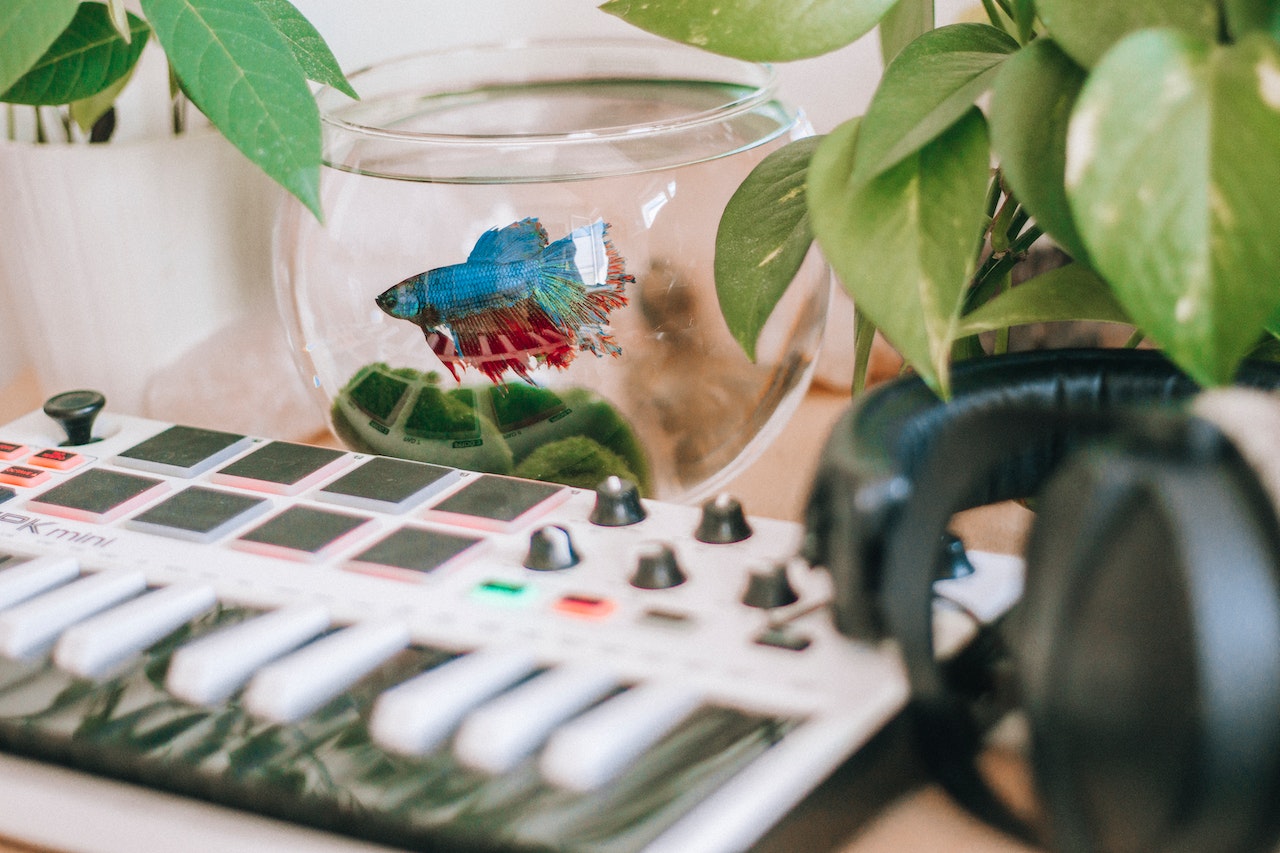
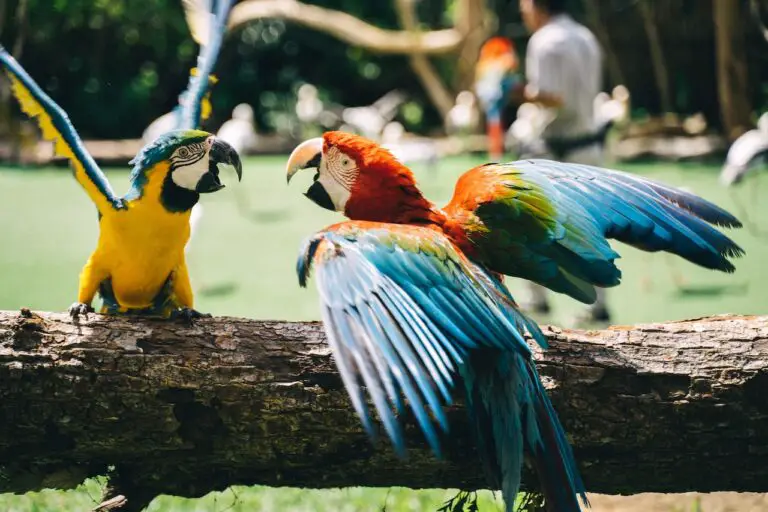
![Exotic Small Mammal Supplies - Top Must-Have Picks [Guide]](https://exoticpetsplace.com/wp-content/uploads/2023/06/Exotic-Small-Mammal-Supplies-Top-Must-Have-Picks-768x458.jpg)
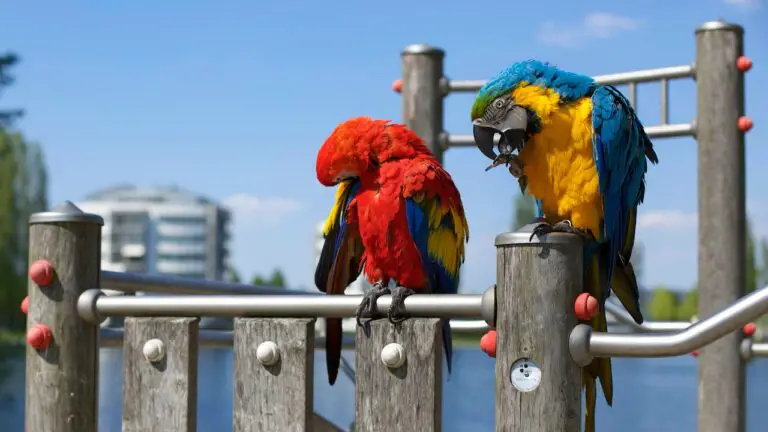
![Creating the Perfect Aquarium for Exotic Aquatic Pets [Full Guide], a girl looking at a fish tank](https://exoticpetsplace.com/wp-content/uploads/2023/06/Creating-the-Perfect-Aquarium-for-Exotic-Aquatic-Pets-Full-Guide-a-girl-looking-at-a-fish-tank-768x512.jpg)
